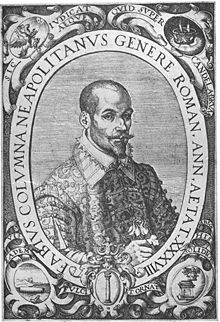Biography
He was the son of Girolamo Colonna, a philologist and antique dealer who was also editor of the fragments of the Latin poet Ennius. As a youngster he became proficient in Latin and Greek before attending the University of Naples, where he graduated in law in 1589. He suffered from epilepsy, which prevented him from practicing law, so he turned to studying the ancient authors of medicine, botany and natural history. He noticed numerous errors and omissions in Dioscorides' Materia medica , but his commentary on that work is now lost.
In the period between 1606 and 1616, Colonna studied fossils, finding evidence for their organic origins.
The publication of his first works on botany, such as De purpura made him a celebrity among naturalists and one of the first members of the Accademia dei Lincei in Naples, which had been founded by Federico Cesi in 1612. In the following years, his academic activity at the Lincei was intense, including the writing of the Apiario and the Tesoro Messicano that the Lincei published in 1625 and 1628.
Colonna became interested in the recently invented telescope and microscope, corresponding with Galileo Galilei and other Lincean academics on astronomy. [2]
In 1625 he published two drawings, Apiarium and Melissographia, regarding bees.
Colonna was also interested in music, inventing a stringed, meantone temperament instrument, the pentecontachordon, having 50 strings in which the octave is divided into 31 parts and the tone into 5 parts.
Colonna was a pupil of Ferrante Imperato and a friend of Giambattista della Porta and Bartolomeo Maranta.
Gaius Julius Hyginus was a Latin author, a pupil of the scholar Alexander Polyhistor, and a freedman of Caesar Augustus. He was elected superintendent of the Palatine library by Augustus according to Suetonius' De Grammaticis, 20. It is not clear whether Hyginus was a native of the Iberian Peninsula or of Alexandria.
The Accademia dei Lincei is one of the oldest and most prestigious European scientific institutions, located at the Palazzo Corsini on the Via della Lungara in Rome, Italy.
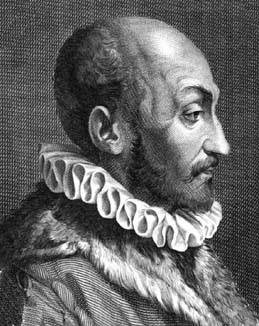
Giambattista della Porta, also known as Giovanni Battista Della Porta, was an Italian scholar, polymath and playwright who lived in Naples at the time of the Renaissance, Scientific Revolution and Counter-Reformation.

Agostino Scilla was an Italian Baroque painter, paleontologist, geologist, numismatist, and a pioneer in the study of fossils and in scientific illustration. In addition to his paintings, he published an early text on paleontology: La vana speculazione disingannata dal senso which was introduced to English audiences by William Wotton of the Royal Society in 1696. He was among the first to promote a scientific understanding of fossils in contrast to fantastic Biblical and divine interpretations.
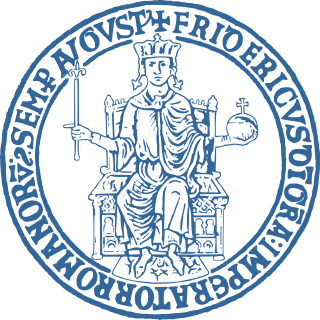
The University of Naples Federico II is a public research university in Naples, Campania, Italy. Established in 1224 and named after its founder, Frederick II, it is the oldest public, secular, non-sectarian or state-funded university in the world, and one of the world's ten oldest universities in continuous operation.
This is a list of music conservatories in Naples, Italy.

Pompeo Colonna was an Italian noble, condottiero, politician, and cardinal. At the culmination of his career he was Viceroy of the Kingdom of Naples (1530–1532) for the Emperor Charles V. Born in Rome, he was the son of Girolamo Colonna, whose father Antonio was second Prince of Salerno; and Vittoria Conti, of the Conti de Poli. His family belonged to the highest rank of nobility both of the City of Rome and of the Kingdom of Naples. Pompeo and his family were hereditary supporters of the Holy Roman Empire (Ghibbelines), and they spent their careers fighting their hereditary enemies, the Orsini family, and defending and expanding their family territories and interests. He played a significant, if sometimes disruptive, role in the Conclaves of 1521 and 1523 on behalf of the Imperial interest. His family commitments and his conclave activities brought Pompeo into conflict with the second Medici pope, Clement VII, whose election he vigorously opposed, and made him a leading figure in the attempted overthrow of Pope Clement and the Sack of Rome in 1527.
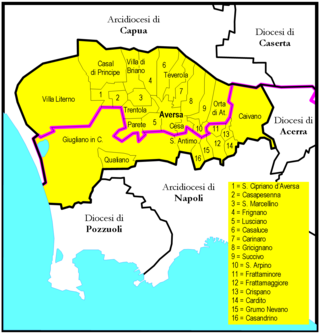
The Diocese of Aversa is a Latin diocese of the Catholic Church in Campania, southern Italy, created in 1053. It is situated in the Terra di Lavoro (Liburia), seven miles north of Naples, and eight miles south of Capua. It is suffragan of the Archdiocese of Naples.
Ristoro or Restoro d'Arezzo was an Italian monk and scientist of the Middle Ages, author of an important prose treatise in the vernacular, La composizione del mondo colle sue cascioni. The Italian scholar Enrico Narducci calls him the 'Humboldt' of the thirteenth century.

Mauro Picone was an Italian mathematician. He is known for the Picone identity, the Sturm-Picone comparison theorem and being the founder of the Istituto per le Applicazioni del Calcolo, presently named after him, the first applied mathematics institute ever founded. He was also an outstanding teacher of mathematical analysis: some of the best Italian mathematicians were among his pupils.
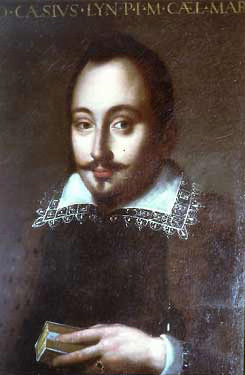
Federico Angelo Cesi was an Italian scientist, naturalist, and founder of the Accademia dei Lincei. On his father's death in 1630, he became briefly lord of Acquasparta.
Giovanni Faber was a German papal doctor, botanist and art collector, originally from Bamberg in Bavaria, who lived in Rome from 1598. He was curator of the Vatican botanical garden, a member and the secretary of the Accademia dei Lincei. He acted throughout his career as a political broker between Maximilian I, Elector of Bavaria and Rome. He was a friend of fellow Linceian Galileo Galilei and the German painters in Rome, Johann Rottenhammer and Adam Elsheimer. He has also been credited with inventing the name "microscope".

Luca Valerio (1553–1618) was an Italian mathematician. He developed ways to find volumes and centers of gravity of solid bodies using the methods of Archimedes. He corresponded with Galileo Galilei and was a member of the Accademia dei Lincei.

Francesco Stelluti was an Italian polymath who worked in the fields of mathematics, microscopy, literature, and astronomy. Along with Federico Cesi, Anastasio de Filiis and Johannes van Heeck, he founded the Accademia dei Lincei in August 1603.
Giovanni Salvatore (ca.1620–ca.1688) was a Neapolitan composer and organist.
Elisabetta Fiorini Mazzanti was an Italian botanist and writer. She was known for her work in bryology and algae. In scientific literature, she is referred to by the abbreviation Fior.-Mazz.

Massimo Pica Ciamarra is an Italian architect. He has been active since the 1960s, designing over thirty buildings recognised by the Italian Ministry of Culture as "significant for the history of contemporary architecture" in Italy, across nine regions, including, in Naples, the ENEL Twin Towers, the Monte Sant'Angelo Campus of the University of Naples Federico II, and the Piazzale Tecchio in Fuorigrotta. He served as vice-president of the Italian Institute of Architecture from 1997 until 2011, and has been, since 2006, the editor-in-chief of The Carré Bleu. From 1971 until retirement in 2007, he held a professorship in architectural design at the University of Naples Federico II.
